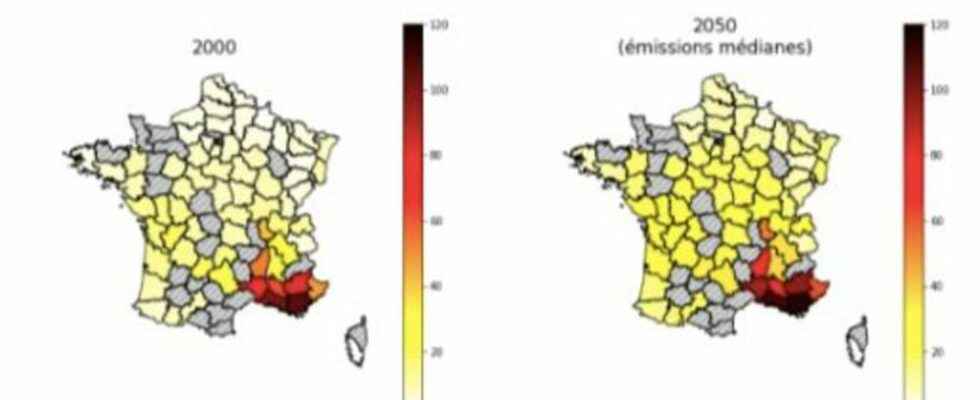Three years after the fire at the Lubrizol chemical plant in Rouen and more than twenty years after the AZF explosion in Toulouse, French industrial sites are facing a new threat. Could forest fires, more and more numerous and intense due to global warming, cause a new industrial disaster? That’s what reminds the study carried out by the climate risk analysis firm Callendar, published this July 18. While more than 20,000 hectares have been destroyed by flames in Gironde in just over a week, Emmanuel Macron recalled that “we already have three times more forests that have burned than in 2020”.
The firm used satellite images to scan the environment close to the 1,247 Seveso sites in France – which use or store hazardous materials (note that nuclear power plants and military sites are not counted in this designation). He retained the sites for which, within a radius of 5 km, there was at least 10% flammable vegetation. This vegetation also had to extend to the immediate surroundings of the site. The result is chilling: a quarter of Seveso sites in France, i.e. 316, meet these criteria. Among them, 187 are classified Seveso high threshold, therefore among the most dangerous sites. In particular, they can store flammable and toxic materials in large quantities.
The north of France will no longer be spared
Global warming amplifies the frequency and intensity of meteorological conditions favorable to extreme events, including fires (high temperature, wind, air humidity, precipitation). Using the forest weather index (IFM), the Callendar firm studied the weather conditions around the various Seveso sites, in order to assess the fire risk. Based on IPCC median scenario forecasts, Callendar has established that between 2000 and 2050, the number of Seveso facilities exposed to a high risk of fire for more than ten days per year will double. While only a third of dangerous industrial sites currently experience a high probability of fire for more than 10 days per year, this proportion will reach three quarters of all Seveso sites by 2050. And if we consider the number of sites exposed more than 30 days a year this time, the trend is similar. Their number should also skyrocket, to reach 62 installations in 2050, ie 1.5 times more than in 2000 when only 39 were concerned.
These facilities and the associated risks are concentrated in certain departments in France. While the high probability of fires for a long time only concerned a few departments in the south-east of the country, the Var and the Rhône Valley in the lead, these will gain territories hitherto spared. “Even if the South-East will remain the most exposed zone, the center will now also be affected (+ 85% in Cantal in 2050 compared to 2000), the South-West (+ 70% in Aveyron, + 64% in Charentes) and Île-de-France (which has 102 Seveso sites)”, explains the author of the study Thibault Laconde. And to add: “Seine-et-Marne will be in 2050 the third department most concerned by this risk, after Isère and Bouches-du-Rhône”. Thus, while the risk was historically low in the northern half of France, the latter will also have to prepare to face this critical phenomenon. In a report published last November, the Robin des Bois association also reported a significant upsurge in fires on sensitive industrial sites in Hauts-de-France.
Long confined to the south-east, the risk of fires concerning dangerous industrial sites near forests will spread to other regions by 2050, and should affect the south-west, the center, and the Ile- of France.
callendar
Risks for the population
A situation that presents major risks both for the surrounding natural environments and biodiversity and for the health of the surrounding populations, insofar as “these fires emit toxic and carcinogenic products into the atmosphere, exposing the population to health risks” , reports the Robin des Bois association.
To limit the risk of an industrial accident, the Callendar firm therefore calls for immediate prevention actions. “The worsening of forest fires, or their appearance around sites hitherto spared, must be anticipated by operators, emergency services and the State, in particular with the implementation of preventive actions, the ‘Adaptation of emergency plans and the sizing of emergency resources,’ reads the report published yesterday.
